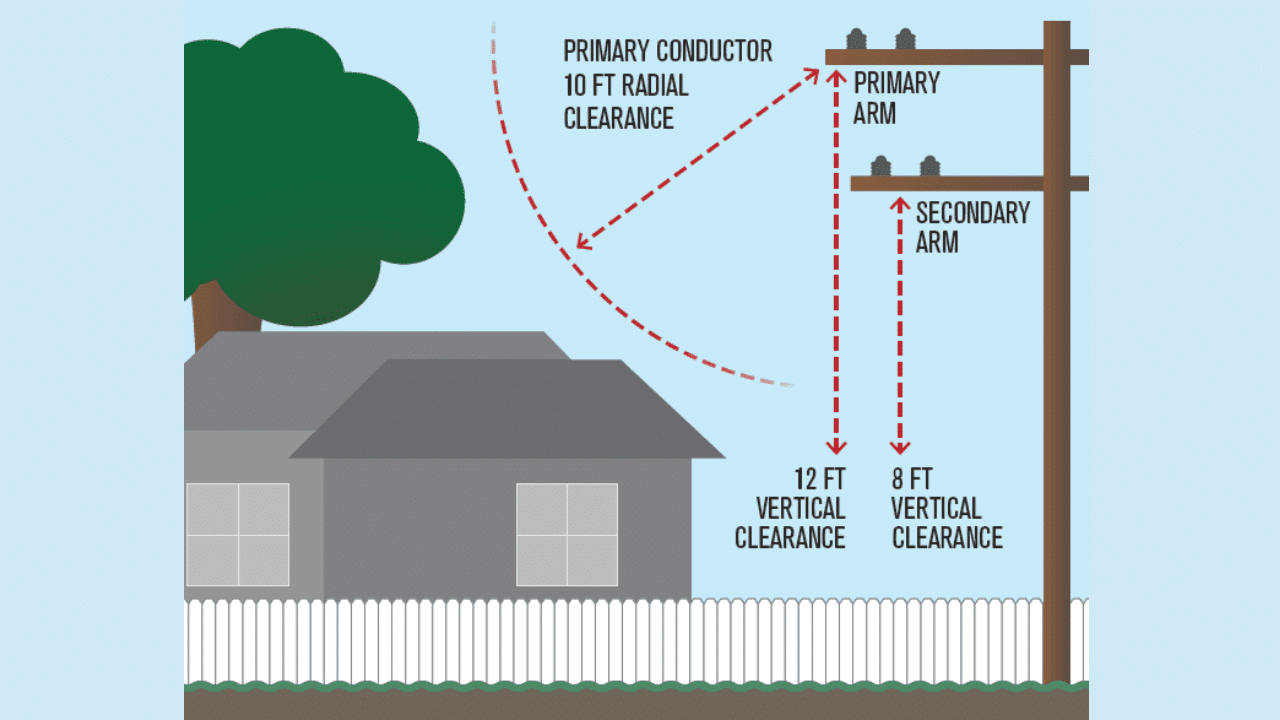If you own a house with a utility easement on the property deed, the chances are that it is likely to affect any home improvement additions that you may be hoping to make on your property.
To help you prepare for your upcoming property addition, we explain what a utility easement is, how it might affect you, and how you find out what you need to consider before pressing ahead with any projects.
What is a Utility Easement?
A utility easement is a legal arrangement whereby utility companies can access private land if the work to be undertaken is deemed to be for the benefit of the public.

For example, suppose a particularly large tree in your backyard is interfering with network connectivity. In that case, a utility company may have the legal authority to remove or trim it without your permission.
Although other easements may be included on land agreements (necessity, private, and prescriptive), utility easements tend to be the most common. While you might be inconvenienced by a utility easement from time to time, it’s actually an important part of the development and sustainability of communities.
Utility easements typically allow for sewage, telephone lines, Internet, and various other essential aspects of our daily lives to be maintained. If it weren’t for such arrangements, utility companies would face a difficult time carrying out required repairs and improvements.
How Might I Be Affected by a Utility Easement?
If you’ve purchased a property that comes with a utility easement, it could potentially affect you in the following ways:
How Do I Find Out the Terms of the Utility Easement on My Land?
Arguably the biggest inconvenience facing homeowners who are subject to utility easements is the fact that certain additions may not be permitted under the terms of the arrangement. This is particularly frustrating if you’re keen to undertake a home improvement project, as you might find that you’re not permitted to do so.
But how do you find out what’s permitted? Here’s our guide to finding out more about your utility easement:
Locate the Property Deed
The details of a utility easement will be clearly stipulated on the property deed. Typically, you can find the deed for your property in one of the following locations:
If you can, acquire a copy of the property deed and read the terms of the utility easement thoroughly. You will probably have to pay for access to the deed, and you can usually apply for a certified copy for future reference.
Understand Who is Granted Permission to Your Property (And for What Purpose)
The first thing to do when you receive the property deed is to read through the terms of the utility easement. You should be clear on who (and which companies) are permitted to access your property and for what reason.
This will give you an idea of the type of additions that are likely to be restricted. For instance, if a sewer or water company requires access to pipes in your backyard, you’re probably not going to be able to install a swimming pool in that area.
That being said, you shouldn’t make assumptions, so it’s important to read the terms thoroughly to understand precisely what is permitted as a result of the arrangement.
Contact the Utility Company Directly
When you’ve decided that you want to press ahead with an addition to your home, you should contact the utility company directly to address the planned work. While communication with the company is unlikely to go smoothly, it’s an important step to know where you stand.
We wouldn’t advise proceeding with additions to your property if you’re not clear about the terms of your utility easement. Things will get very expensive for you very quickly if you restrict access that has been stipulated in a utility easement.
To find out information about utility easements that deal with underground lines, you can call 811 directly in the United States. Known as ‘call before you dig,’ the hotline was set up by the Federal Communications Commission, and you can get up-to-date information about any easements on your property that deal with underground lines.
Hire Legal Representation to Consult on Your Behalf
The final option available to you is to hire an attorney to look into the utility easement on your behalf. While you might think this is an unnecessary expense from the outset, the cost of hiring an attorney will be much less than court fees and remedial work if you’re sued by a utility company for breaching the terms of the easement.
An attorney will take the guesswork out of understanding the easement and will ensure you know where you stand. While hiring an attorney is far from ideal, it’s your safest bet when dealing with a utility easement.
Final Thoughts
Ultimately, it’s your responsibility as a homeowner to understand the terms stipulated within a utility easement. If you ignore the easement or carry out work that will restrict the access of a utility company, you could be liable to expensive legal fees going forward.
By reviewing the property deed and seeking legal representation, you are putting yourself in the best position when it comes to finding out if your planned additions are permitted under the terms of your utility easement.


Thank you for the insight